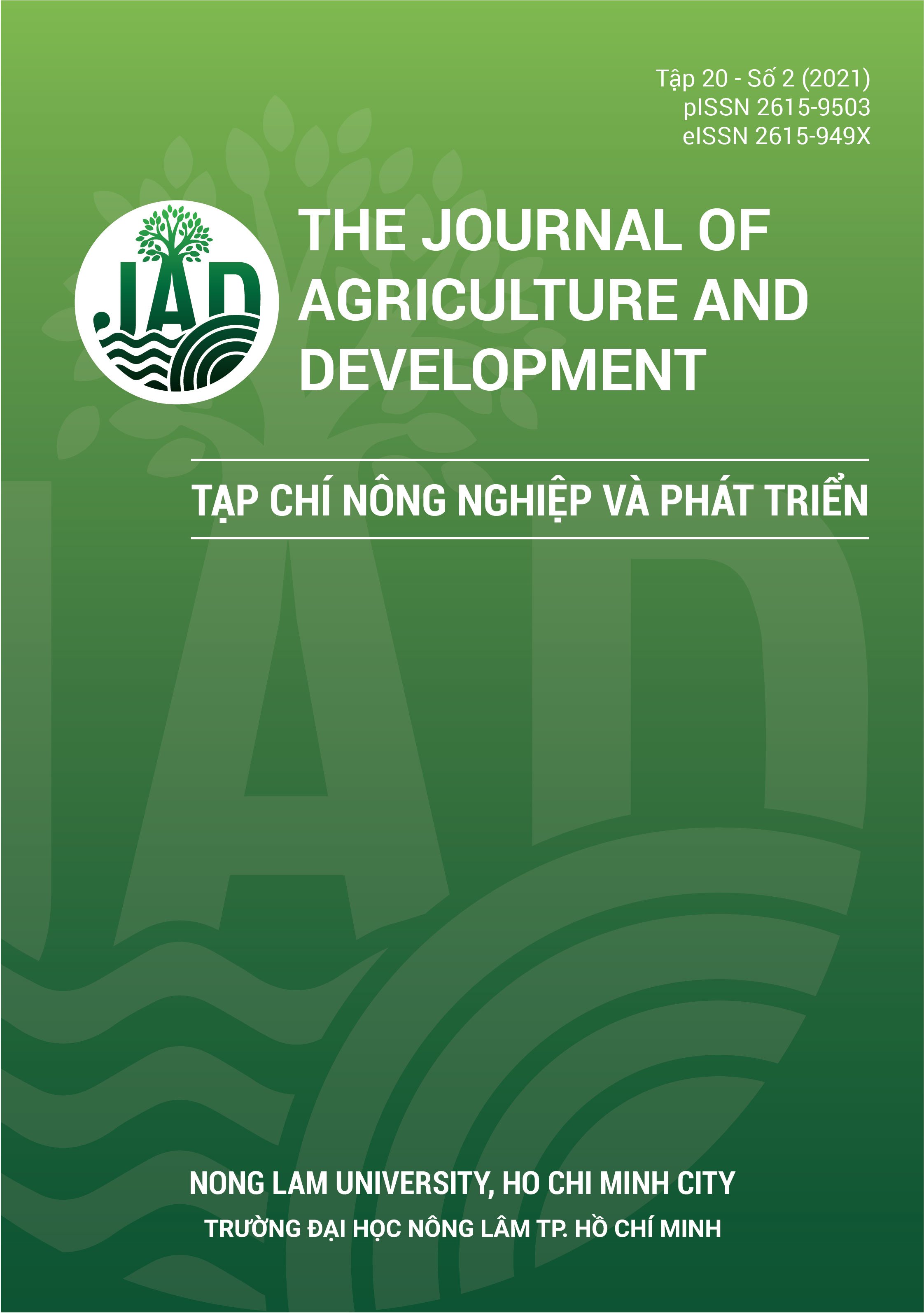Effects of two hydroponic components on water quality, snakehead fish growth and leaf mustard production in aquaponic system
Main Article Content
Abstract
Aquaponic model is a farming system that integrates a recirculating aqua- culture system with hydroponics. There are three hydroponic methods commonly employed in the aquaponics systems: the media bed (MB), the nutrient film technique (NFT) and the deep-water culture - floating rafts (DWC). This study was conducted to evaluate effects of two hydroponic systems (DWC and MB) on water quality parameters, growth rate of fish and development of vegetable in the aquaponic model of snakehead fish (Channa striata) and leaf mustard (Brassica juncea). Snakehead fish were stocked with a density of 40 fish/75 liters of water and were cultured for 167 days. The results showed that daily temperature, pH and dissolved oxygen parameters in the two systems were almost the same and relatively stable while the electrical conductivity in the MB was much higher than that in the DWC. Similarly, the levels of the parameters weekly moni- tored (ammonia, nitrite, nitrate, total phosphorus, and alkalinity) in the MB were higher than those in the DWC. At the end of the experiment, final weight, weight gain, specific growth rate and survival rate of fish in the MB treatment were higher than those in the DWC treatment, but the feed conversion rate of fish in the MB was lower than that in the DWC. On the contrary, vegetable yields in the DWC were significantly higher than those in the MB. In general, the DWC aquaponics work better than the MB system.
Article Details
References
Baird, R. B., Eaton, A. D., & Rice, E. W. (2017). Standard methods for the examination of water and wastewater (23rd ed.). Washington DC, USA: Water Environment Federation, American Public Health As- sociation, American Water Works Association.
Bhujel, R. C. (2008). Statistics for aquacultureed. New Jersey, USA: Wiley-Blackwell.
Cao, V. T., Pham, T. L., & Truong, Q. P. (2014). Effects of stocking density on water quality, growth and survival of snakehead fish (Channa striata) cultured in recirculating system. Can Tho University Journal of Science 2, 79-85.
Goddek, S., Delaide, B., Mankasingh, U., Ragnarsdottir, K. V., Jijakli, H., & Thorarinsdottir, R. (2015). Challenges of sustainable and commercial aquaponics. Sustainability 7(4), 4199-4224. https://doi.org/10.3390/su7044199
Gomez, K. A., & Gomez, A. A. (1984). Statistical procedures for agricultural research (2nd ed.). New York, USA: John Wiley & Sons.
Lam, M. L., Nguyen, T. H., & Duong, N. L. (2011). Trials of snakehead (Channa sp.) culture in lined tanks in Hau Giang province. Proceedings of the 4th Conferenceon Aquaculture and Fisheries. Can Tho City, Vietnam: Can Tho University.
McMurtry, M. R., Sanders, D. C., Cure, J. D., Hodson, R. G., Haning, B. C., & Amand, E. C. St. (1997). Efficiency of water use of an integrated fish/vegetable co-culture system. Journal of the World Aquaculture Society 28(4), 420-428. https://doi.org/10.1111/j.1749-7345.1997.tb00290.x
Ngo, T. L. (2003). Culture technique of eel, frog, softshell turtles and snakehead fish (9th ed.). Ho Chi Minh City, Vietnam: Agricultural Publishing House.
Phan, T. T. V., & Cao, V. T. (2014). An effect of feeding frequency on the growth of snakehead (Channa striata) reared in recirculation systems. An Giang University Journal of Science 4(3), 79-84.
Rakocy, J. E. (2012). Aquaponics - integrating fish and plant culture. In Tidwell, J. H. (Ed.). Aquaculture production systems (344-386). New York, USA: John Wiley & Sons. https://doi.org/10.1002/9781118250105.ch14
Rakocy, J. E., Masser, M. P., & Losordo, T. M. (2006). Recirculating aquaculture tank production systems: Aquaponics integrating fish and plant culture. Retrieved November 1, 2006, from http://aquaculture.ca.uky.edu/publication/recirculating-aquaculture-tank-production-systems-aquaponics-integrating-fish-and-plant.
Sallenave, R. (2016). Important Water Quality Parameters in Aquaponics Systems. New Mexico, USA: College of Agricultural, Consumer and Environmental Sciences, New Mexico State University.
Somerville, C., Cohen, M., Pantanella, E., Stankus, A., & Lovatelli, A. (2014). Small-scale aquaponic food production: integrated fish and plant farming. FAO Fisheries and Aquaculture Technical Paper 589, 262. Retrieved December 25, 2014, from http://www.fao.org/3/i4021e/i4021e.pdf.
Timmons, M. B., & Ebeling, J. M. (2010). Recirculating aquaculture (2nd ed.). New York, USA: Cayuga Aqua Ventures.
Tran, T. T. H., Nguyen, T. N. L., Duong, T. Y., & Nguyen, A. T. (2005). Protein requirements of giant snakehead (Channa micropeltes, Cuvier, 1831) fingerlings. Can Tho University Journal of Science 3, 58-65.
Wortman, S. E. (2015). Crop physiological response to nutrient solution electrical conductivity and pH in an ebb-and-flow hydroponic system. Scientia Horticulturae 194, 34-42. https://doi.org/10.1016/j.scienta.2015.07.045








